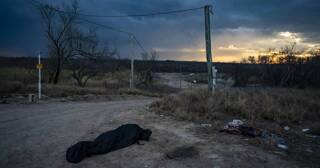How Evolution Produces Large Developmental Changes
A team of scientists at Caltech has published a study that sheds new light on how major changes can occur through the process of natural selection: How Evolution Can Allow For Large Developmental Leaps.
ScienceDaily (July 20, 2009) — How evolution acts to bridge the chasm between two discrete physiological states is a question that’s long puzzled scientists. Most evolutionary changes, after all, happen in tiny increments: an elephant grows a little larger, a giraffe’s neck a little longer. If those tiny changes prove advantageous, there’s a better chance of passing them to the next generation, which might then add its own mutations. And so on, and so on, until you have a huge pachyderm or the characteristic stretched neck of a giraffe.
But when it comes to traits like the number of wings on an insect, or limbs on a primate, there is no middle ground. How are these sorts of large evolutionary leaps made?
According to a team led by scientists at the California Institute of Technology (Caltech), in close collaboration with Patrick Piggot and colleagues from the Temple University School of Medicine, such changes may at least sometimes be the result of random fluctuations, or noise (nongenetic variations), working alongside a phenomenon known as partial penetrance. Their findings were recently published online in the journal Nature.
“Our work shows how partial penetrance can play a role in evolution by allowing a species to gradually evolve from producing 100 percent of one form to developing 100 percent of another, qualitatively different, form,” says Michael Elowitz, the Caltech assistant professor of biology and applied physics, Bren Scholar, and Howard Hughes Medical Institute investigator who led the team. “The intermediate states that occur along the way are not intermediate forms, but rather changes in the fraction of individuals that develop one way or the other.”
Partial penetrance is the name given by evolutionary biologists to the degree to which a single genetic mutation may have different effects on different organisms in a population.
“If you take a bunch of cells and grow them in exactly the same environment, they’ll be identical twin brothers in terms of the genes they have, but they may still show substantial differences in their behavior,“ says Avigdor Eldar, a postdoctoral scholar in biology at Caltech and the paper’s first author. These sorts of variations—or noise, as the researchers call it—can actually allow a mutation to have an effect in some organisms but not in others. For example, while some genetically variable cells will show the expected effect of the mutation, others may still behave like a normal, or wild type, cell. And still others may do something else entirely.
”These mutant cells don’t only show a different morphology,“ Eldar notes. ”They show more variability in their behavior. In a population, you can see a mixture of several different behaviors, with some cells doing one thing and others doing something else.”












